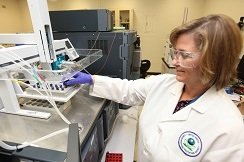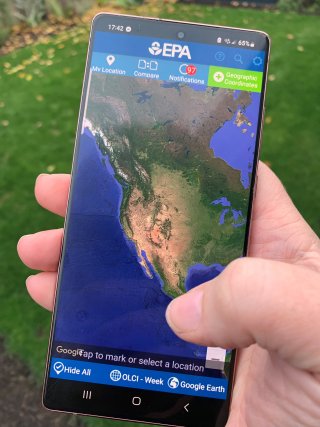Water Research Outputs
EPA’s Office of Research and Development delivers research necessary to support EPA’s overall mission to protect human health and the environment. Our water research provides the science, tools, and technologies needed for innovatively and economically supporting safe and adequate supplies of water and protecting people’s health and livelihood while restoring and maintaining watersheds and aquatic ecosystems.
Analytical Methods

- Collection of Environmental Methods. EPA offices and laboratories, and outside organizations, have developed approved methods for measuring the concentration of a substance or pollutant.
- Drinking Water Research Methods. Residues of unregulated contaminants may be present in drinking water. However, little is known about their prevalence in the environment. To protect human health, EPA scientists have developed a number of EPA methods to detect unregulated contaminants.
- PFAS Analytical Methods Development and Sampling. EPA scientists are developing validated analytical methods for drinking water; groundwater; surface water; wastewater; and solids, including soils, sediments, biota, and biosolids, which may eventually become standard methods or research methods. Visit EPA's status of PFAS research and development webpage to get updates about this and other PFAS research.
-
Methods to Measure Waterborne Contaminants Research to Minimize Health Risks. EPA researchers have been developing and evaluating effective tools to measure waterborne contaminants, which are essential for determining the risks these pollutants pose to people and the environment. With these tools, the source and level of contaminants can be evaluated, the risk posed to exposed communities can be characterized, and approaches for improving affected water resources can be developed.
Models and Tools
-

EPA's Cyanobacteria Assessment Network app (CyAN app), which provides access to cyanobacterial bloom satellite data for over 2,000 of the largest lakes and reservoirs across the United States. - Water Sensors Toolbox. This toolkit is a collection of resources and information related to EPA research that uses, evaluates, and/or develops water sensors―including remote sensors and related data management technology. These resources may be useful to students, researchers, citizen scientists, water quality decision makers, or others interested in collecting data on water quality with the use of water sensors.
- Green Infrastructure Modeling Toolkit. The resources in this toolkit include innovative models, tools, and technologies for communities to manage water runoff in urban and other environments. They incorporate green or a combination of green and gray infrastructure practices to help communities manage their water resources in a more sustainable way, increasing resilience to future changes.
- Environmental Modeling Community of Practice. This site provides a collection of groundwater, food chain, total maximum daily load, surface water, and multimedia models and tools.
- Contacts for Models, Tools, and Databases. This webform provides the contacts and emails for all freely available water-related models, tools, and databases.
Publications
The topics below provide quick links to water research-related products in EPA’s Science Inventory, which provides research products, such as journal articles, reports, fact sheets, and presentations, primarily from EPA’s Office of Research and Development. The entries provide product descriptions, contact information, and links to available online and printed material or websites.
All water research products in Science Inventory

